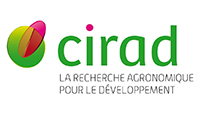Waste reduction and nutrient recovery during the co-composting of empty fruit bunches and palm oil mill effluent
Résumé
Palm oil is the most consumed edible oil in the world. Roughly half of the production originates from Indonesia, where the expansion of the crop has been criticized from an environmental perspective. Reducing the environmental impact of plantations through better waste management practices is critical to achieve cleaner production.
In this context, our study was focused on composting, a practice increasingly adopted among agro-industries. Our trial was designed to test co-composting of the main palm oil mill by -products – empty fruit bunches (EFB) and palm oil mill effluent (POME) – under different POME/EFB ratios and turning frequencies. After 60 days the compost was still in a mesophilic phase and could not be considered as mature compost due to high C/N ratio and temperature. High weight and volume reduction were achieved (40% and 60% respectively), as well as significant water evaporation from the POME and EFB (60%). We found that a POME to EFB ratio of 1 to 1.5 m3/ton was optimal for moisture (65-70%), free air space (>50%) and nutrient recovery, showing that in our experimental conditions the composting process could not use all the POME produced by the mill (3m3/ton of EFB). The nutrient recovery rate was close to 100% for phosphorus, potassium and magnesium. For nitrogen we observed 30-35% of
losses. Composting on a concrete platform with a roof, not over-spraying the piles and recycling all the leachates are critical points to achieve high nutrient recovery efficiency and to control final compost quality.
| Origine | Fichiers éditeurs autorisés sur une archive ouverte |
|---|
